Campaigners fight to save RAF Tangmere's control tower which helped win Battle of Britain and D-Day and oversaw flights by the 'war's bravest woman'
-
•RAF Tangmere in West Sussex was arguably Britain's most important airfield used in the Second World War
-
•Used for covert flights of Special Operations Executive (SOE) agents, including tragic heroine Violette Szabo
-
•Was also the base for Spitfire hero Johnnie Johnson, the RAF's most successful fighter ace during the conflict
Published: 15:53, 24 November 2017 | Updated: 17:08, 24 November 2017
A campaign has been launched to return a historic World War Two airfield control tower to its former glory after it was 'shamefully' allowed to fall into ruin.
RAF Tangmere in West Sussex was arguably Britain's most important airfield used in the war and played a vital role in helping to win the Battle of Britain and ensuring the success of D-Day.
Tangmere was also used for the covert flights for the Special Operations Executive (SOE) agents, including tragic heroine Violette Szabo, the 'bravest woman of the war'.
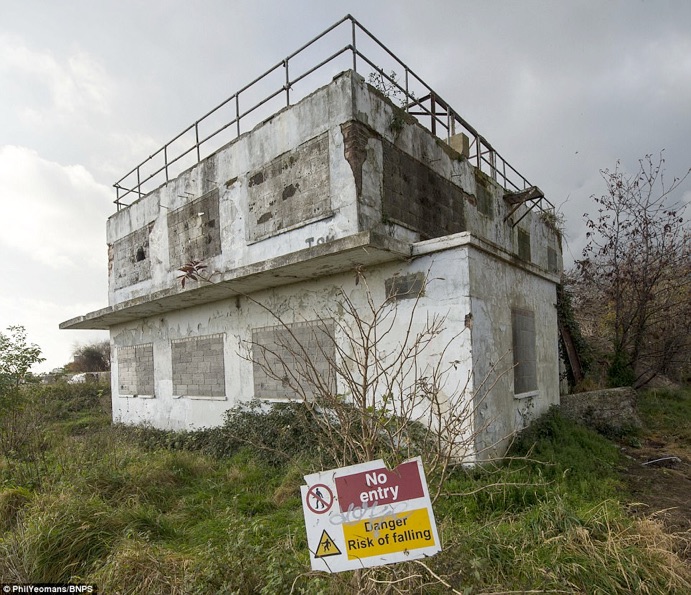
RAF Tangmere in West Sussex was arguably Britain's most important airfield used in the war and played a vital role in helping to win the Battle of Britain and ensuring the success of D-Day, but the control tower(pictured) has been allowed to fall into ruin. Tangmere, based three miles from the south coast, was the first port of call for many damaged RAF bombers returning from air raids on the continent, often with wounded crew on board

RAF Spitfires lined up at a satellite airfield of Tangmere during World War Two. The legendary Group Captain Sir Douglas Bader commanded a squadron at the airfield and it was also the base for Spitfire hero Johnnie Johnson, the RAF's top scoring fighter ace of the war
The legendary Group Captain Sir Douglas Bader commanded a squadron at the airfield and it was also the base for Spitfire ace Johnnie Johnson, the RAF's top scoring fighter ace of the war.
Tangmere, based three miles from the south coast, was the first port of call for many damaged RAF bombers returning from air raids on the continent, often with wounded crew on board.
It was also where Prince Charles learnt to fly in 1968. The base was closed in 1970 and most of its buildings were knocked down to create room for housing.
All that remains is the three storey control tower which is now a dilapidated, rat-infested, graffiti-covered shell in the middle of an overgrown field.
Now a team of local historians have highlighted its disgraceful demise by launching a campaign, Save Tangmere Tower.
They say the top floor of the control tower could be turned into a replica of how the control room looked in 1945, while the bottom and middle levels could become an educational facility for local schools.
The project would be financed through a Heritage Lottery Fund grant and cost tens of thousands of pounds.
Former air traffic controller Dudley Hooley, 73, director of the nearby Tangmere Military Aviation Museum, said: 'RAF Tangmere was the most important fighter command airfield in the whole of the war.

Tangmere was also used for the covert flights for the Special Operations Executive (SOE) agents, including tragic heroine Violette Szabo, the 'bravest woman of the war'. She was flown out of the airfield by 161 Squadron, but was caught on her second mission and executed at Ravensbruck concentration camp
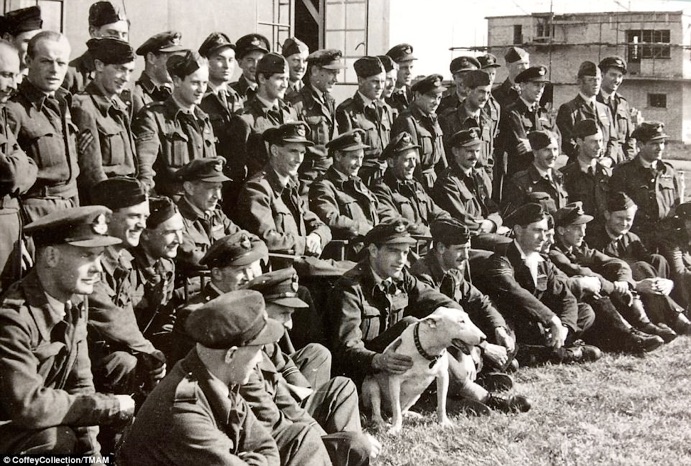
A team of local historians have highlighted its disgraceful demise of the tower by launching a campaign, Save Tangmere Tower. They say the top floor of the control tower could be turned into a replica of how the control room looked in 1945, while the bottom and middle levels could become an educational facility for local schools. Pictured: 41 and 91 Spitfire Squadron at RAF Tangmere in 1940
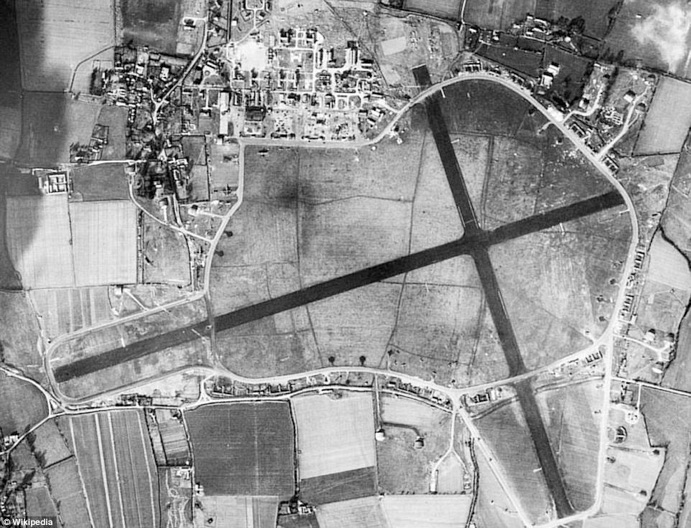
The origins of the airfield date back to 1916 when journalist Geoffrey Dorman, after making an emergency landing, reported it would make a good landing ground. A year later the land was requisitioned under the Defence of the Realm Act and the field was used for training by the Royal Flying Corps. Pictured: An aerial view of Tangmere in 1944
'But it was more than that, as the 161 Squadron flew agents into and out of France from here, including Violette Szabo.
'It is totally and utterly shameful that something as important as this has been allowed to fall into this state. The control tower is what is left of RAF Tangmere and it is so sad to see it covered in graffiti and falling down.
'It wouldn't take much to restore it and it would be a visible memorial to Tangmere and will protect its memory.'
Local councillor Matt Gover-Wren, 33, founder of Save Tangmere Tower, said: 'This was one of the most important fighter command stations in the Battle of Britain.
'Yet for 47 years the watch tower has been left in a state of complete disarray. I don't want to see another 47 years of decay.
'This control tower is a beacon which brought our brave men and women home during the war. It would be magnificent if we could restore it to its former glory.'
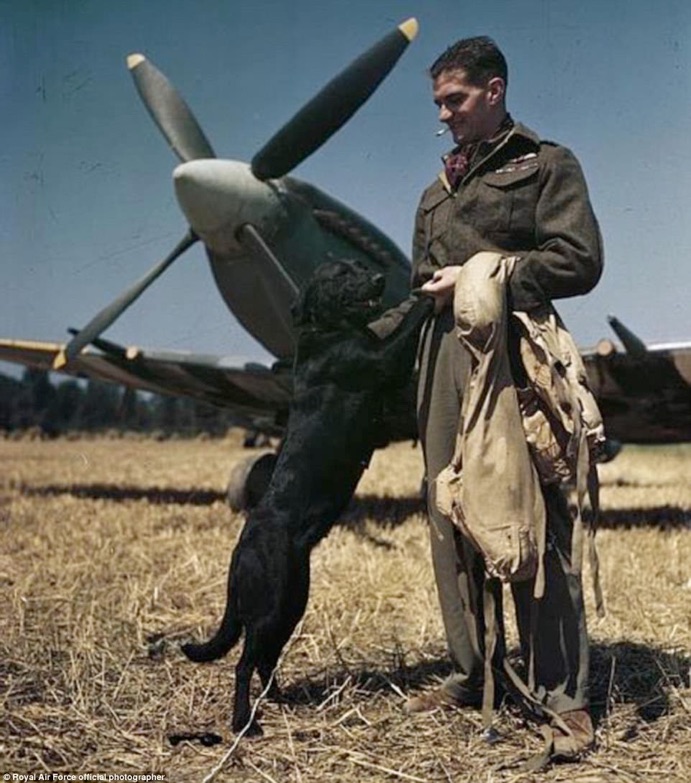
Air Vice-Marshal Johnnie Johnson, the leading Allied fighter ace of the Second World War, flew from Tangmere Airfield. Johnson crashed his first Spitfire four days after flying it for the first time, but achieved mastery of the craft in the skies over wartime Britain. He is pictured playing with a black Labrador next to his Spitfire
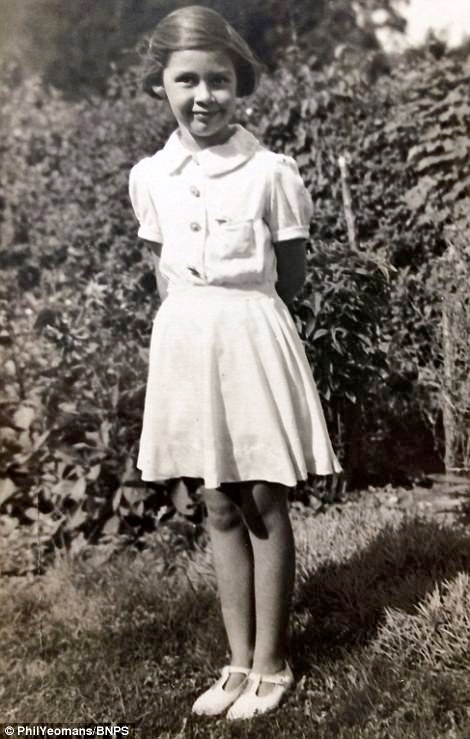
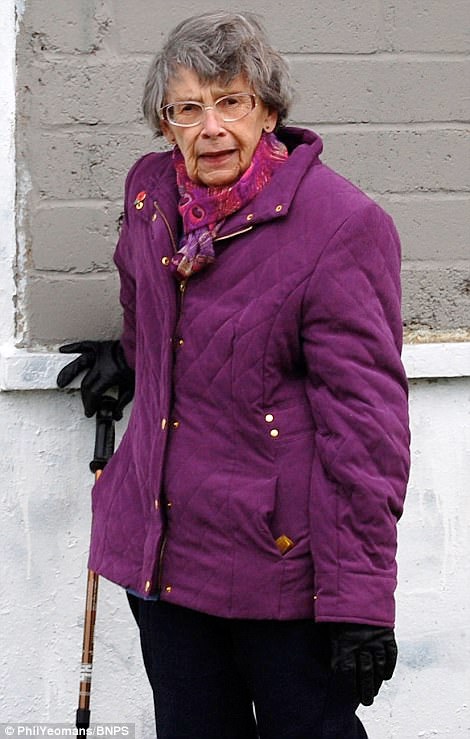
Joyce Warren, 82,(left, on August 16 1940, and right, today) is honorary secretary of the Tangmere Museum, lived in the village at the time and remembers the raid. She said: 'I was living in the village with my grandparents and father at the time. It was a brilliant day with a blue sky when all of a sudden there were these terrific sounds coming at us. I was only five years old so I was not frightened because I didn't know what the implications were at the time'
The origins of the airfield date back to 1916 when journalist Geoffrey Dorman, after making an emergency landing, reported it would make a good landing ground.
A year later the land was requisitioned under the Defence of the Realm Act and the field was used for training by the Royal Flying Corps.
In September 1918 it was briefly handed over to the United States Air Service before being used as a holding station for squadrons returning from the continent.
It was closed in 1920 but reopened before the Second World War when it was a key fighter station with a number of squadrons stationed there.
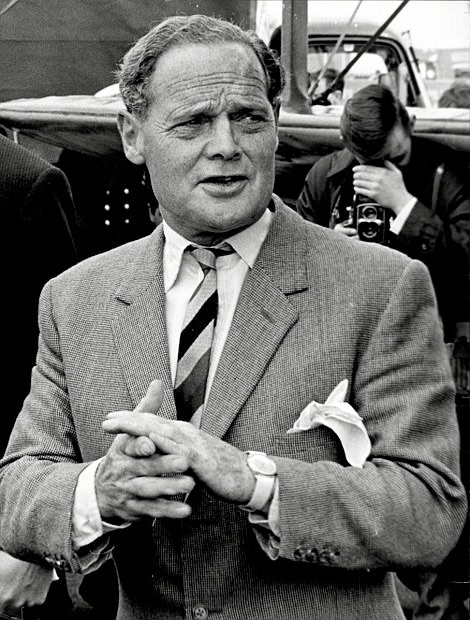
Bader, who commanded a squadron from Tangmere Airfield, is pictured at the Biggin Hill Airshow in 1966. He was credited with 20 aerial victories, four shared victories, six probables, one shared probable and 11 enemy aircraft damaged
On August 16, 1940, the airfield was attacked by German aircraft and the original control tower was destroyed, alongside five aircraft hangars, workshops, the water pumping station, the officers' mess and the sick quarters.
In total, 13 people were killed in the raid.
Joyce Warren, 82, honorary secretary of the Tangmere Museum, lived in the village at the time and remembers the raid.
She said: 'I was living in the village with my grandparents and father at the time. It was a brilliant day with a blue sky when all of a sudden there were these terrific sounds coming at us.
'I was only five years old so I was not frightened because I didn't know what the implications were at the time. My grandmother took me into the earth dugout in the garden that my dad built.
'Miraculously, the village was untouched, but the airfield suffered very significant damage and a lot of people, both military and civilian, were killed.'
A temporary control room was erected at Tangmere before the Air Ministry rebuilt the control tower in 1944 in preparation for the D-Day operations. This is the building that stands to this day.
Mrs Warren said: 'RAF Tangmere played such an important part in the war as a fighter command station and it is so sad to see the state the control tower has been left to get into.
'I hope something can be done to save it.'
A preliminary submission for Lottery funding has received support from Tangmere Aviation Museum, Tangmere Local History Group and the University of Chichester.
Professor Hugo Frey, from the university's history and politics department, said: 'The tower can be an important part of connecting with the local community and provides a hugely important educational space for understanding the national and international significance of this area during the war.'
-
•More information about the campaign can be found on Twitter @TangmereTower and on Facebook.

Former air traffic controller Dudley Hooley, 73, director of the nearby Tangmere Military Aviation Museum, said: 'RAF Tangmere was the most important fighter command airfield in the whole of the war.' The project would be financed through a Heritage Lottery Fund grant and cost tens of thousands of pounds

The base, where Prince Charles learnt to fly in 1968, was closed in 1970 and most of its buildings were knocked down to create room for housing. All that remains is the three storey control tower which is now a dilapidated, rat-infested, graffiti-covered shell in the middle of an overgrown field